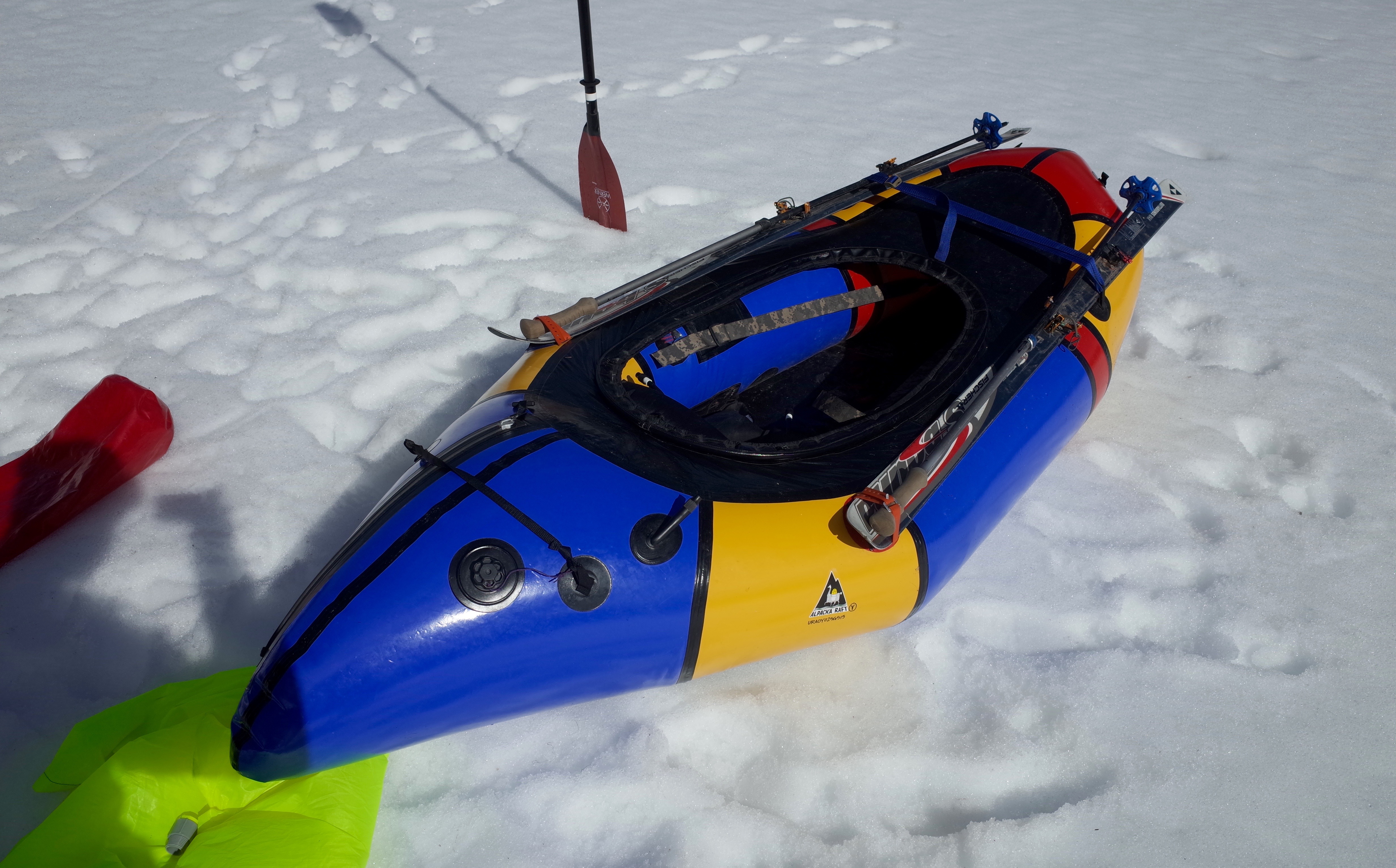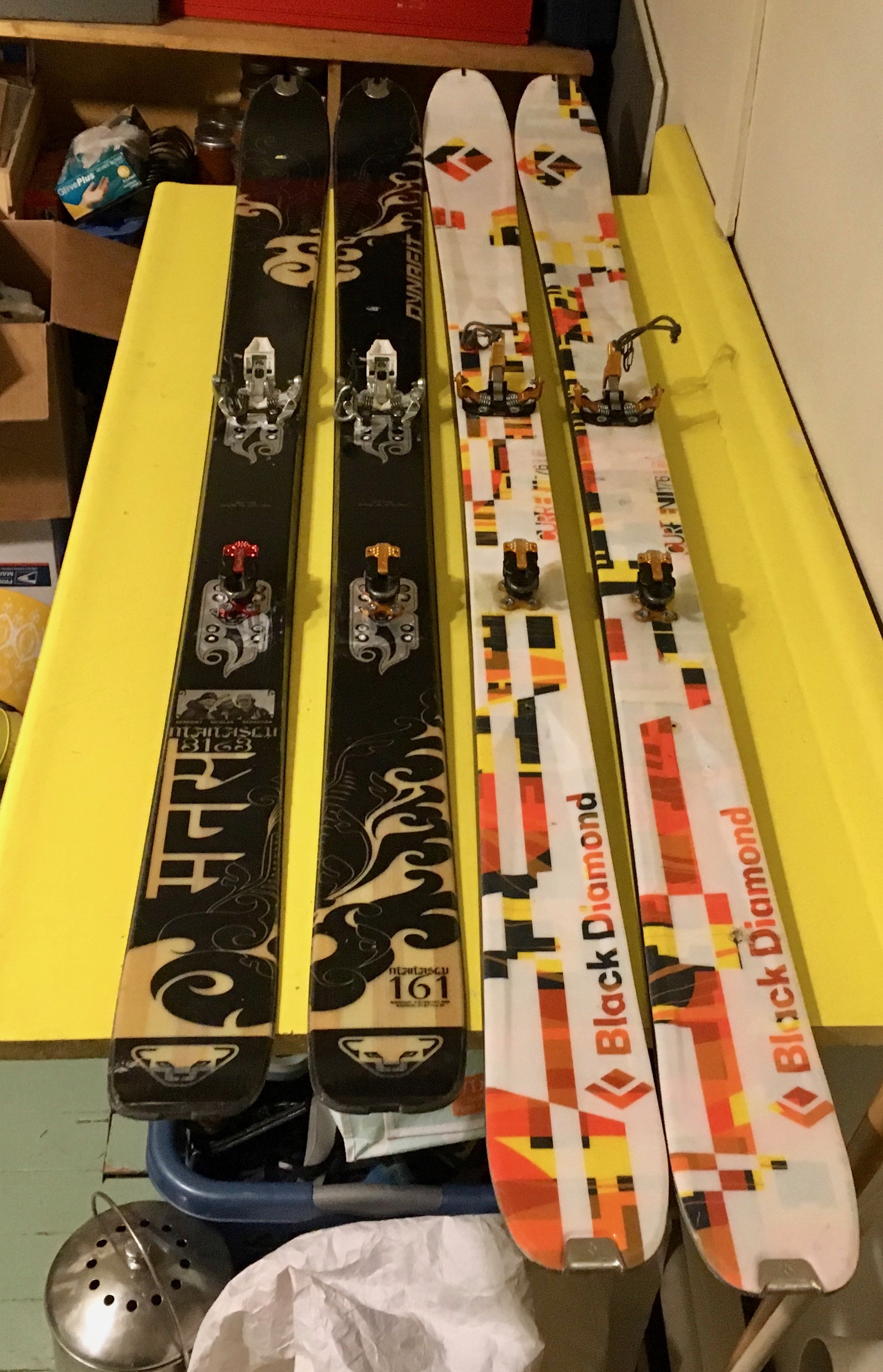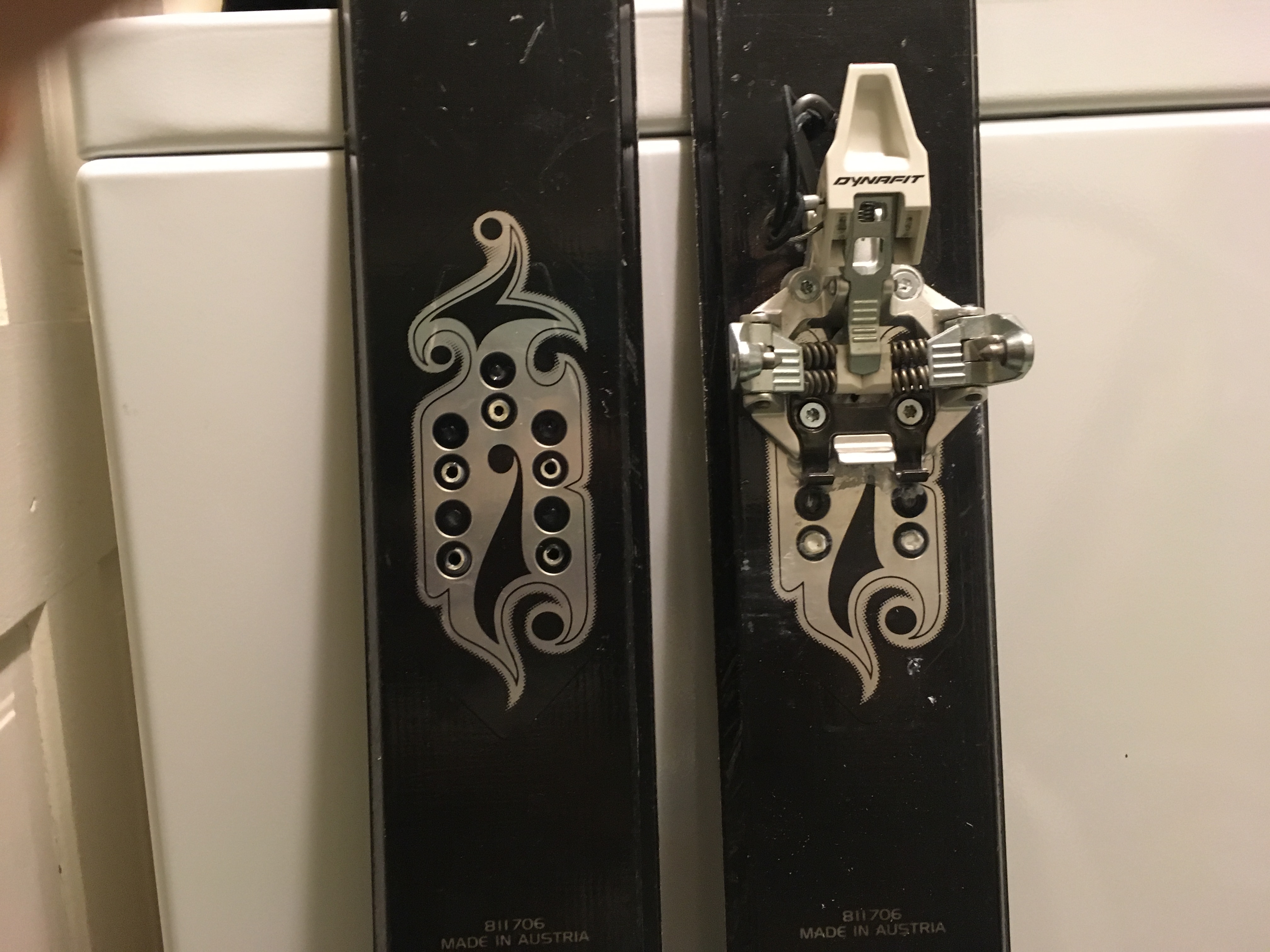My first rule of skiing is that my gear has to do a lot of things, in the backcountry. I don’t go outside to be around people, and recent events have confirmed that for me serious ski mountaineering is simply too dangerous. Therefore I’ll inevitably be drawn to longer, moderate, backpacking-type routes that feature plenty of good skiing plus a lot of other stuff most skiers prefer to avoid. Powder turns are always welcome, but a big line on a snowy map is what drives my choices, first and foremost.
I’ve written a bunch about ski gear for this sort of thing, most notably this long post in 2014 (which references my first, 2010, writing on the subject), as well as this post from early last year. In short, for the past seven years I’ve been continually fine with but underwhelmed by 3 pin nordic gear, largely due to the boots and their sub-par performance in nasty conditions over multiple days. More recently I’ve been poking around the margins of using tech bindings and boots on a range of light skis, an option which is lighter than traditional nordic backcountry gear and provides vastly better performance on any steepish up or down, and is much warmer, but is expensive and comes up short in the ergonomics department.

For reference; 5 years ago I skied in and ran the crux sections of the wilderness Middle Fork of the Flathead in March. On that trip I had 10 miles of snowmachine track and 12 miles of narrow but mostly flat trail down to the river. I used Rossignol 3 pin boots, and 60mm underfoot nordic skis with Voile Mountaineer bindings. The skis were fine, and at 169cm short enough to be on the boat and run whitewater. The boots got wet, inevitably, and I had very cold feet for much of the floating sections. In contrast, last spring I finally got the conditions I wanted and around the same time of year skied in and ran almost all of the Wilderness section of the South Fork of the Flathead. I had over 50 miles of non-river travel on that trip, and due to early melt out and winter salvage logging close to 8 of those miles were at least mostly walking. I used similar length, wider nordic skis with Plum Race bindings and plastic double tech boots. The skiing was efficient, though I missed fishscales and tore the hell out of my feet. My feet stayed marvelously warm, even when I got drenched from the knees down in 28 degree weather, and I survived the final 30+ degree tree ski and iced over logging road descents in good shape.
In short, comparing these two trips both shows an obvious way forwards towards an ideal ski rig, and a lot of ground to cover to get there.

My second rule of skis is that the gear should be as cheap as possible, especially the skis themselves. Out on day four, when you’re sick of deadfall you will not only not avoid rocks, you’ll right over them if they give you traction to make if up a little gully or help slow you down and avoid yet another crash under a 35 pound pack. In the backcountry skis get trashed. Over the years I’ve let economics and circumstance drive my gear selection, with a heavy dependence on the epic used gear sale each fall at Rocky Mountain Outfitter (aka the best mountain shop on earth) in Kalispell. My Outtabounds Wax skis, above, were 20 bucks there, which included a pair of NNN-BC bindings I gladly passed on to a friend for the cost of a pint. I wasn’t planning on expanding or complicating my ski quiver this winter, merely on refamiliarizing myself with snow after a full winter away from it, hopefully in time for something big in the spring. But a few weekends ago in the Flathead a pair of 161cm Dynafit Manaslus were just sitting on the wall for 40 bucks, and the quiver got reshuffled.

In short, the Outtabounds Waxs went back to having 3 pins on them, and the Manaslus will take over as the multiday specific backcountry ski. My first gen Black Diamond Currents have been a great ski, the heart of consistency across all kinds of terrain, but they’re a bit too heavy at just over 3 pounds a ski bare. The Manslus are a hair under 3 pounds a ski with bindings, and should provide plenty of surface area for soft snow and a big pack, along with good maneuverability in the woods. The tech bindings will go downhill well, or at least as well as my ability and the conditions allow.
Mount point was a big question with the Manaslus, and with tech touring skis in general. Nordic orthodoxy has the 3 pin line on the balance point of the ski, which centers kick over the wax pocket and allows you to move the tip of a ~200cm plank around in deadfall. For multiday woods skiing I’ve long taken to bumping this mount point forward a centimeter or two forward, especially if I’m skiing skis which are short for my weight. Tail dive in powder, crust, and especially decaying spring snow is a major, major problem and a forward mount puts more surface area out back. When skiing AT skis nordic style being centered over the wax pocket is a non-issue, so I’ve tended towards “pin line” (of the toe inserts) being 3-4 cm forward of balance point. This is generally a good skinning position, and once the weight of a race heel piece is added the ski often wants to hang at around 45 degrees, which is ideal for moving the skis through sticks and logs. It also provides plenty of tail support in bad snow.

The first generation Manaslus further complicate the mounting picture by having pre-drilled “inserts” (no metal involved, just pre-threaded nylon-lined holes) which are far back even by AT standards. I also have big feet (mondo 28) to be skiing 161cm skis. After a lot of futzing I went back to balance point +3, and was able to use the forward-most set of holes for the back set of screws on my Speed radical toe pieces, and drill holes for the front screws. Thankfully the metal topsheet reinforcement goes far enough forward to allow for this, and have a good bit of wiggle room in front. Drilling these skis will be familiar to anyone who has mounted bindings in ultralight skis. There’s a layer of metal just under the nylon topsheet, with the core of the ski being a very air wood/foam laminate that feels like almost nothing under a drill bit. Epoxy screws well, as it doesn’t take much to strip screws set in such a small amount of solid material.
My questions for the winter will now be:
- Will the short and light and stiffish Manaslu’s be a good all around backcountry shape, especially once spring begins and they’ll be carried on my back and on a packraft?
- Will I be able to sort out my boots such that 3-4 consecutive days of skiing won’t thrash my feet, and what will it take?
- Will I develop the courage to dremel fishscales into the base, as they’ve proven crucial for spring missions?
The last answer will almost certainly be yes, and unless I end up on lots of hard snow I’m quite sure the first will be as well. It is the boot question, and the massive blisters from last March, that gives me shivers.

Leave a comment